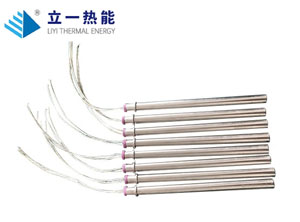During the processing of 3D heat-bent glass, the 3D heat-bent glass heating tubes are closely related to the temperature control system. The two work in coordination to jointly ensure the quality and efficiency of glass heat-bending.
The 3D heat-bent glass heating tube is the core component that provides heat. It converts electrical energy into thermal energy to heat the glass, raising it to a softened and bendable temperature. The temperature control system acts like a "commander", monitoring and regulating the temperature of the heating tubes in real time to ensure that the glass is thermally bent within the appropriate temperature range. If the two are not properly coordinated, the glass may have problems such as insufficient bending deformation, excessive deformation or even cracking.
When used in combination, the primary consideration is the compatibility between the temperature control system and the heating tubes. 3D heat-bent glass heating tubes of different specifications and powers have different heating characteristics, and the temperature control system needs to be adapted to them. For instance, heating tubes with higher power have a faster heating rate. The temperature control system needs to have a faster response speed and more accurate regulation capability to control the temperature in a timely manner and prevent it from being too high. When choosing a temperature control system, it is necessary to check whether its temperature control range covers the temperature range required for the operation of the heating tubes and whether the temperature regulation accuracy meets the requirements of the glass hot bending process.

During the installation process, the reasonable arrangement of temperature sensors is of vital importance. The temperature sensor is responsible for collecting the temperature data of the heating tube and the glass surface and transmitting it to the temperature control system. Usually, multiple sensors are placed at key locations such as around the heating tube and in the heat-bent area of the glass to comprehensively obtain temperature information. If the sensors are not arranged reasonably, it may lead to inaccurate data received by the temperature control system and prevent it from correctly regulating the heating tubes. For instance, if the sensor is too far from the heating tube, the detected temperature will be delayed, affecting the timeliness of temperature control.
In practical use, the collaborative operation of the two still needs to be adjusted according to different hot bending processes. For some glass products with complex shapes and high requirements for hot bending accuracy, more precise temperature control is needed. At this point, the temperature control system can be set with multiple temperature control points and heating and cooling curves. It can rapidly heat up the glass at the initial stage of heating and slowly adjust it when approaching the target temperature to ensure uniform heating of the glass. Meanwhile, based on the actual state of the glass during the hot bending process, such as color changes and deformation degrees, the parameters of the temperature control system are manually fine-tuned to make the temperature output of the heating tube more in line with the requirements.
In addition, daily maintenance and calibration are also indispensable. Regularly check the operating status of the temperature control system to ensure that its data acquisition, processing and control functions are normal. Calibrate the temperature sensor to ensure the accuracy of the detection data. At the same time, check whether the 3D heat-bent glass heating tube is aged or damaged, and replace the faulty parts in time to maintain the stability of the combination between the two.



